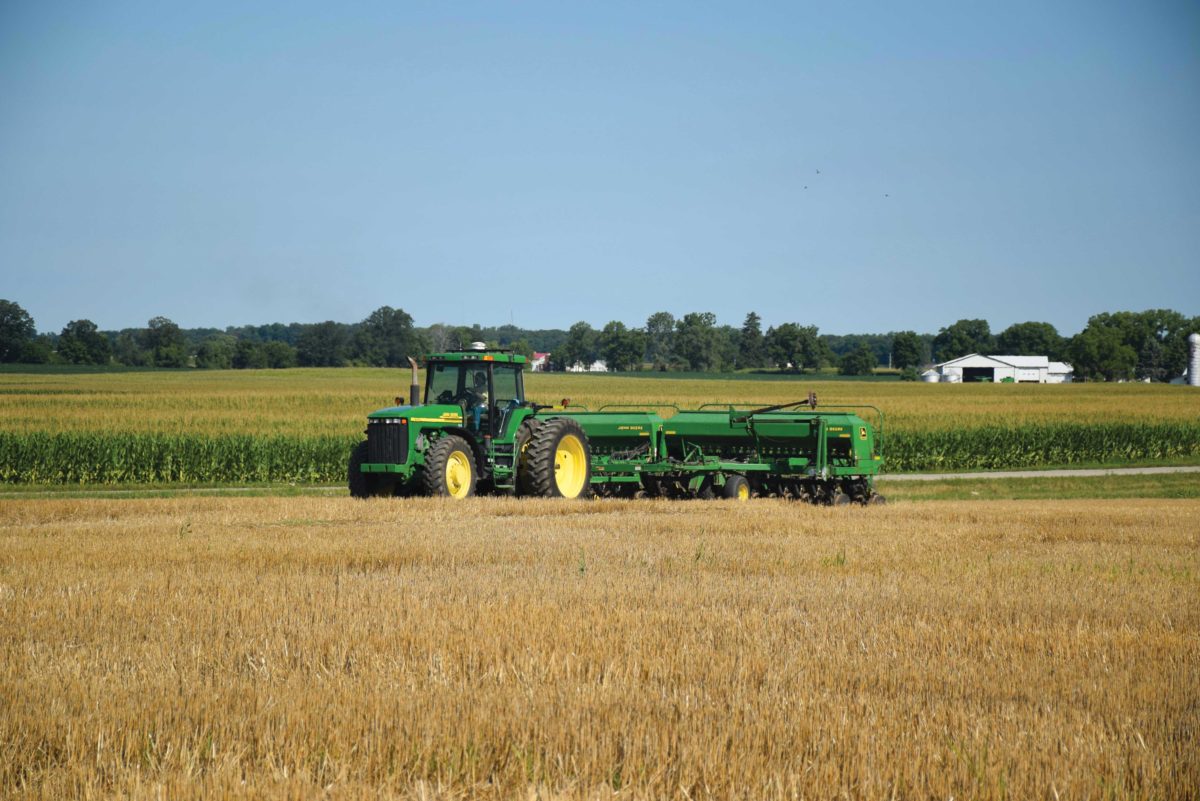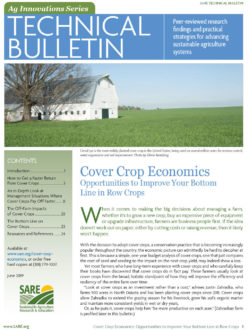
To be sure, determining the economic impact of planting a cover crop is not as simple as a one-year, cost-and-return analysis. Ultimately, the decision to plant a cover crop should be viewed as an investment in the long-term resilience of the farm. Many factors, from particular on-farm challenges to the gradual accrual of soil health benefits, will influence when cover crops start to pay off.
When do cover crops start to pay?
With all of the variables described in this bulletin, it’s probably safe to say that often, by year three, cover crops will be paying for themselves, if not earlier. There are times when that return on investment could take a little longer, but there are even more situations in which that return can be accelerated. This happens most often when a cover crop is meeting particular on-farm needs, such as dealing with herbicide-resistant weeds, reducing soil compaction, helping with soil moisture management and soil fertility, or providing grazing opportunities. What is the soil health impact from cover crops three to five years down the road?
After three to five years of annual use, well-managed cover crops should start to bring about soil health improvements that improve yields and save on input costs. Not all soil health measures will respond equally fast. For example, earthworm activity and some bacteria and fungi will respond within the first year of cover crop use. However, it can take five years or more before soil organic matter starts to noticeably improve, depending on how the cover crops are managed and what tillage is done. A key point is that cover crop benefits keep accruing over several years. The economic return at year five should generally be greater than year three, and year seven should be greater than year five.
What is the bottom-line economic impact?
A positive first-year return from cover crop use will often occur during drought conditions, where cover crops are grazed (assuming that grazing infrastructure is already in place), or potentially in a situation with challenging herbicide-resistant weeds. When converting from conventional till to no-till, cover crops can help ease that transition, making it possible to break even in year one for soybeans and to make a small return by year two with corn. When compaction or soil fertility is limiting yield, cover crops may provide a positive net return by the second year. Receiving incentive payments from federal or state government programs can also make it possible to immediately pay for the cost of cover cropping during a transition period.
Under the most conservative assumptions for the analysis reported here, where there are no particular issues being addressed, no incentive payments or grazing, and normal rainfall, it will take on average about three years of planting a cover crop for the practice to break even or provide a net profit, not unlike applying lime to address soil pH. By year five, on most fields, cover crops should be producing a modest profit due to a combination of yield increases and somewhat lower production costs.
The contribution cover crops make to farm resiliency is also underappreciated. Consider that the majority of farmers carry crop insurance to reduce risk. Cover crops are a form of risk management like crop insurance; investing in them to improve soil health will help reduce future risk from weather extremes. Significant cover crop payoffs have been documented in drought years, where yield increases of more than 10% may be seen. Even in wet years there can be a noticeable benefit from the improved aeration and soil structure provided by cover crops, allowing spring planting or fall harvest to start two to three days earlier following cover crops.
Ultimately, a broad-based, holistic perspective is helpful in factoring in all the different ways that cover crops can benefit a field and a farm. As farmers gain experience with cover crops, they end up making other management changes that complement the cover crops and maximize their overall economic efficiency while improving the sustainability of their farming livelihood. The bottom line is that cover crops should be valued both for their immediate benefits and as an investment in the long-term success of the farm.
